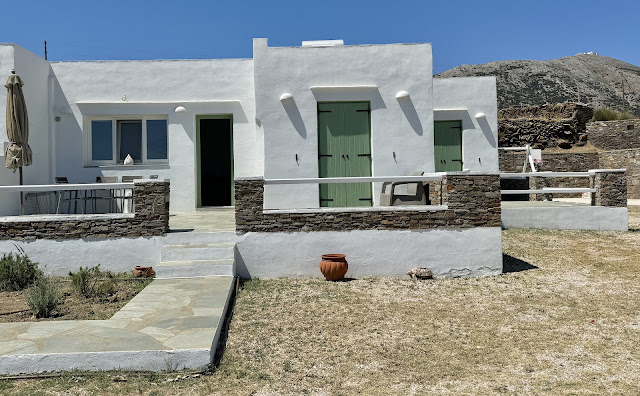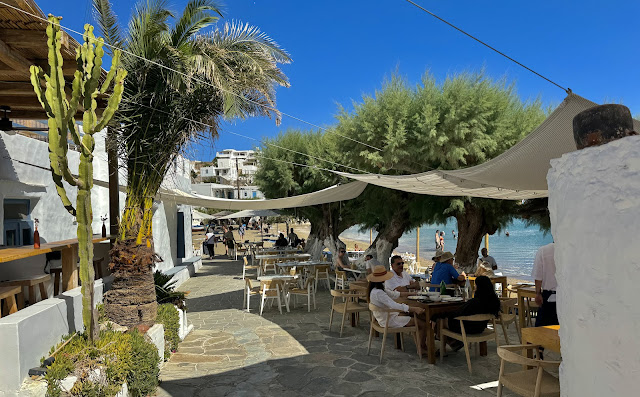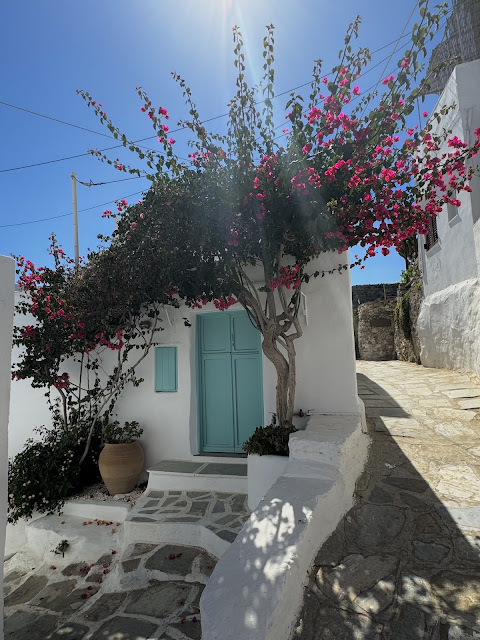Our next destination was Sifnos, a small Greek island in the Cyclades group.
Our SeaJet ferry left Piraeus at 7:40 am.
On the 2.5 hour, 90 mile voyage, we passed several other small islands--Kea, Kythnos, and Serifos.
The remarkably clear light highlights the stark contrast between the rocky, arid islands and the deep, dark, almost purple blue of the sea. Wine-dark in Homer's words.
There are 220 islands in the Cyclades, so picking just one to visit was difficult. We were looking for someplace scenic, not overrun by tourists, but with enough amenities to make the visit enjoyable. And given the limited time we had available, we wanted something close enough to Athens that we wouldn't lose two days going and coming.
Sifnos fit the bill. It's only about 23 square miles with a population of under 1,000, but it is beginning to build a reputation as a low-key alternative to the more famous (and crowded) Greek islands. And the food was supposed to be exceptional.
It's fairly mountainous, with peaks up to 2,500 feet.
In the island's main town, Apollonia, we found a little whitewashed AirB&B with a panoramic view of the Aegan and the nearby islands of Paros and Antiparos.
We met a lovely Greek woman named Eva who offered to drive us around the island that day. We hadn't planned to rent a car because the island is so small and is famed for its hiking trails.
We reckoned without the hills and the heat, however. 95 degrees under a brutal sun is not conducive to hiking. So we were glad to take Eva up on her kind offer to show us her favorite spots.
The first stop was a beautiful hilltop church. There are over 300 churches on the island, many built in very inaccessible places. The church was built on the site of an old fortress. Sifnos in ancient days was known for its gold and silver mines, and was consequently a frequent target for pirate raids. Watchtowers were built on most of the peaks on the island and signal fires were lit to warn of the approach of hostile vessels. Very much like the famous scene in Lord of the Rings. The beacon fires are still lit on certain festivals days during the year.
The views from the church were incredible.
The interior of the church is simple.
Many of the icons we saw feature decorative silver plates overlaying the paintings.
Next we visited the village of Faros and another amazing old church built on a rocky point jutting into the sea.
The altar paintings were very old and more elaborate than those in the previous church.
A metal ship suspended from the ceiling is supposed to protect mariners from shipwreck.
Faros also has an excellent, uncrowded swimming beach, which Luciya and I took full advantage of.
A little rocky at first, but the water was cool and refreshing.
And there was a sweet little taverna where we ate a delicious lunch.
In fact there were sweet little waterfront tavernas all over the island.
We got our fill of perfectly fresh seafood.
The food was quite good in general on Sifnos. Simple, slow-cooked meals using mostly local ingredients. Pork and lamb roasted for hours in a traditional wood oven, giant beans and chickpeas ditto, gorgeous salads with intensely-flavored cherry tomatoes and fresh local feta. Yum!
There are a number of working donkeys on the island.
And cats everywhere.
The Church of the Seven Martyrs in the village of Kastro is particularly picturesque.
In contrast to our visit to Santorini, the streets of Kastro were almost completely devoid of tourists.
There are many old windmills.
And the sunsets were lovely.
All in all, Sifnos was a perfect spot to slow down and decompress for a few days.
P.



































No comments:
Post a Comment